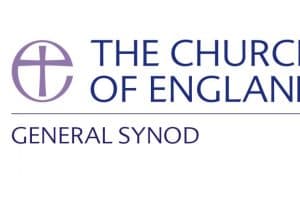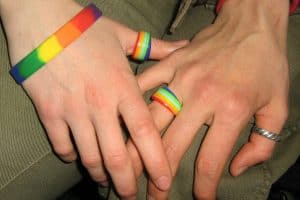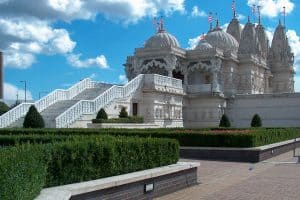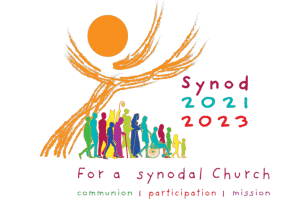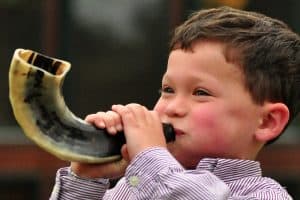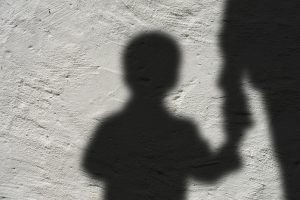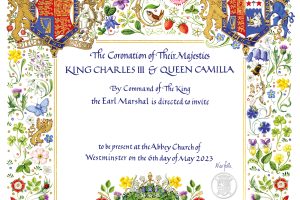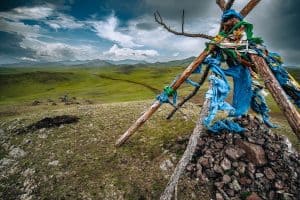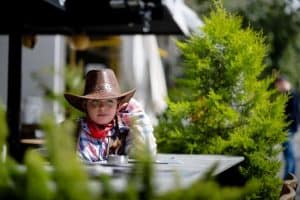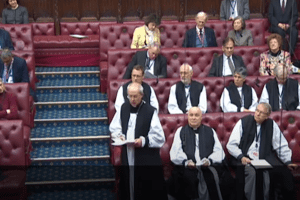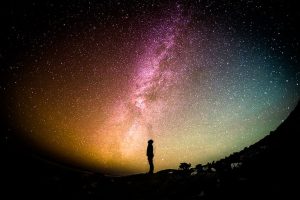Christianity is by far the largest religion in the UK, with 46% claiming adherence in the 2021 census. The religion has dominated the country since its conversion in the 6th century and the Church of England remains the established faith, but today Christianity in Britain is heavily fragmented into hundreds of traditions, denominations and practices.
Overview
Christians are followers (disciples) of Jesus Christ, whom they believe to be God incarnate, and who strive to live by his teachings as set out in the New Testament of the Bible and to have their lives ordered by his life, death and resurrection in first-century Palestine under the rule of the Roman Empire.
Christianity is the largest religious affiliation in Britain, with nearly 59% of the population calling themselves Christian in the 2011 census. Christianity has dominated the countries that formed the United Kingdom (in the Act of Union of 1707) since St Augustine converted England in 597 and became the first Archbishop of Canterbury.
The English Reformation, as distinct from the continental European Reformation, was precipitated by King Henry VIII’s break with the Church of Rome in the 16th century. The Church of England was established in law in the reign of Elizabeth I in the Act of Supremacy, and is the “state church” of England, with the monarch as its Supreme Governor and 26 bishops taking seats in the House of Lords.
Anglicans form the largest denomination, followed by Roman Catholics, Presbyterians, Methodists and Baptists.
Anglicans
The established state Church in England, the C of E is the largest denomination with around one million people regularly worship at its 16,000 churches, although these numbers have been falling steadily for years. Anglicans are very diverse, with significant differences in belief and practice between the different wings of the Church. The three main groupings are Anglo-Catholics, evangelicals and liberals.
Anglo-Catholics are so called because they combine Anglicanism with more Roman Catholic traditions and style. They prefer more formal services, with choral music and organs, clergy in robes, incense and bells. They have both liberal and more conservative/traditionalist factions.
Evangelicals they tend to have a “low” style of worship, which prioritises informality. They often sing modern songs rather than traditional hymns, their priests sometimes do not wear dog collars, let alone robes, and they aim to make their services accessible to people who may not normally come to church. In terms of belief, they take the Bible as their touchstone and see it as having the ultimate authority, not modern society or traditions of the church. A significant and growing subset are charismatic evangelicals, who are strongly influenced by Pentecostalism and make engagement with the Holy Spirit and the supernatural an important part of their church life.
Liberals/the broad church – this group tends to have a middle-of-the-road worship style, which is neither very fussy nor very informal but happy to bring together elements from any tradition. Liberals believe that faith is renewed by new insights and interaction with contemporary society and are often in the vanguard of progressive change within the church.
The Church of England also has sister Churches in other parts of the UK. The Church in Wales was formed in 1920 when the C of E parishes in Wales were disestablished and split off into an independent organisation. The Scottish Episcopal Church is a minority denomination in Scotland which split from the Presbyterian Church of Scotland to retain Anglican structure such as bishops. The Church of Ireland (which covers both Northern Ireland and the Republic) was, similar to Wales, formed by disestablishing the Anglican parishes in Ireland in the 19th century.
Roman Catholics
This is the second largest denomination in England and Wales with some five million adherents and has its own structures under a Nuncio (Papal Ambassador), Archbishop and bishops. Roman Catholics were for many years after the English Reformation and the split with Rome persecuted by the Anglican establishment and government. They were finally granted full emancipation and legal rights in the early decades of the 19th century.
Although there is wide ranges of belief and practice within the Church, Catholics tend to worship in a formal formalised and liturgical style and individual parishes do not vary as much as Anglican ones can.
Key differences with the Church of England include priests having to be unmarried and celibate, stricter rules around divorce, and a generally more conservative position on social questions such as abortion and LGBT issues. However, there is often a wide gulf between official Church teaching, particularly on issues such as contraception, and day to day practice by ordinary Catholics.
Presbyterians and Congregationalists
The Presbyterian (a reformed tradition within Protestantism) Church of Scotland is the national church in Scotland and has about 320,000 members (6% of the Scottish population). The protestants of Northern Ireland are also predominantly Presbyterian, the largest denomination there after Roman Catholics.
Presbyterians are distinguished primarily by their different governance structures. Instead of a hierarchy with bishops and archbishops, individual churches are more self-governing and the Church is run by an elected annual assembly.
Congregationalists are autonomously run churches in the reformed Protestant tradition. The United Reformed Church is a union between Presbyterian and Congregational churches in England.
Historically, both Presbyterians and Congregationalists tended to be quite conservative Christians, but in recent years this has softened and they now more closely resemble Anglicans and other Christian groups in beliefs and practice.
Methodists
Methodism grew out of the Evangelical Revival of the 18th century and was founded by brothers John and Charles Wesley. Although they originated in the Church of England, their radical new way of practising Christianity was not accepted by the established Church and eventually Methodists left to form their own independent denomination.
Structurally, they too differ from Anglicans in not having a hierarchy of bishops and archbishops, and are also governed by an annual elected assembly instead. The Methodist Church of Great Britain claims about 170,000 members.
In belief and practice they do not differ much from Anglicanism or other mainstream forms of Protestant Christianity, although in modern times they tend to be towards the more liberal end of the spectrum (for instance, having permitted gay marriage since 2021).
A reunion of the Methodist Church and the Church of England has been a developing aspiration in recent decades, although there are elements in the C of E which are hostile to the two denominations attempts to partly merge.
Baptists
Baptists are another non-conformist tradition (meaning that they do not conform to the established law of the Church of England), much like Methodists, Presbyterians and Congregationalists, which emerged in the tumult of the 17th century in England when separating from the Church of England.
Their distinctive belief if that baptism is solely a service of initiation into Christian faith by those who freely choose it and therefore do not baptist children, as Anglicans, Catholics and many other traditions have done for millennia.
Similar to other non-conformist Churches, they do not have a formal hierarchy but leave individual congregations to mostly organise and govern themselves. The Baptist Union of Great Britain, the main association of Baptist churches, claims about 110,000 members. There are other independent Baptist churches as well.
Charismatics and Pentecostalists
Pentecostalism grew out of religious revivals in the early 1900s, both in Wales and the United States. It is marked by a rediscovery of the Holy Spirit, and its worship is characterised by exuberant singing, dancing, miraculous healings and other “signs and wonders”.
It has experienced extraordinary growth around the world, particularly in Africa, Asia and South America over the past 50 years, and mostly fuelled by immigration is now perhaps the fastest-growing Christian movement in Britain too. Although there are a number of denominations and networks, Pentecostal churches tend to be non-denominational and independent, with little institutional structures.
The charismatic movement began in the 1960s and 70s when, inspired in part by Pentecostals, Christians within mainstream Protestant denominations in the US began to also prioritise the Holy Spirit and the miraculous in their services and practice. It was brought over to the UK in the 1970s and 80s and has become a major feature of evangelical movements in most of the main denominations.
Quakers
The common name for the Religious Society of Friends, Quakers originated also in the 17th century in England, when they broke away from the Church of England, seeing it as corrupted and authoritarian. Their specific focus has always been on cultivating the individual’s relationship with God, without inserting priests, liturgies, books or other practices in between.
Today, there are approximately 20,000 Quakers in Britain. The movement has become incredibly diverse, spanning fairly evangelical believers who differ from those in mainstream denominations only in worship style, all the way to Quakers who do not believe in a deity at all but instead seek to nurture the “inner light” in everyone.
Their worship services have always emphasised participation and spontaneity, and they are famous for dissenting from numerous social shibboleths, such as their pacifism and conscientious objection during both world wars.
Christianity in numbers
In the 2021 Census, 27.5 million people identified themselves as Christians. The number declined from 59.3 % in 2011. Knowsley was the local authority with the highest proportion of people reporting to be Christians at 66.6 per cent
The Church of England – An average of 984,000 people attended services each week in 2022, representing 1.7 % of the population. Attendance was higher at Christmas and Easter. CofE statistics here
The Church in Wales – Wales has a population of 3,125,000 of which 4.8% attend church. Approximately 150,000 churchgoers. Of those, 28,000 are Roman Catholic, 45,000 are Anglican (Church in Wales), and the remaining 77,000 are split between Baptist, Methodist, Presbyterian, Pentecostal, and Independents. The largest of the “others” being the Baptists with 11,000 attendees. Statistics from Welsh government 2020 here
The Roman Catholic Church – Catholicism is the second largest denomination in England and Wales, with more than four million members and 695,000 in Scotland. Estimated attendance figures for England and Wales in 2012 are 848,960.
Methodist Church – Membership 188,000 at 31 October 2016, a 3.5% year-on-year decline over a decade
Baptists – Figures from December 2016 show 122,752 church members
United Reformed Church – Figures from December 2016 show 49,517 members
Useful links
British Religion in Numbers http://www.brin.ac.uk
UK Church statistics http://www.brierleyconsultancy.com/statistics/



